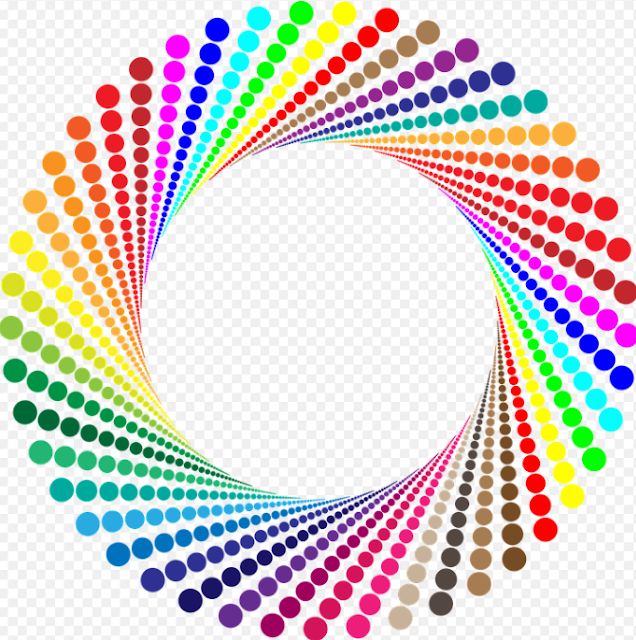THE COLOR THEORY
¿What is color theory?
Color theory is a set of principles used to create a mixture of colors and determine the visual effects it produces on sight and senses. Color theory provides common ground for understanding how colors can be used, organized, coordinated, mixed, and related. Therefore, it is about the mixing of colors and visual effects of color, made by Leonardo Da Vinci, Isaac Newton, Goethe, among others.
Color wheel
The traditional color wheel is based on the 12 colors found in the visible spectrum. It is a basic tool for combining or mixing colors and an easy way to understand how colors relate to each other.
A color wheel has three different types of colors; Primary, Secondary, and Tertiary. Primary colors (red, yellow, and blue) cannot be created with other colors. Primary colors can be used to make the secondary colors (green, orange, and purple). Secondary color combinations can be used to make the tertiary colors (yellow-orange, red-orange, red-purple, blue-purple, blue-green, and yellow-green).
Structure of color theory
Color theory is based on three basic components: the color wheel, color harmonies, and color contrast.
Color theory creates a logical structure for color. For example, if we have an assortment of fruits and vegetables, we can organize them by color and place them in a circle that shows the colors in relation to each other.
Color Harmony
In color theory, color harmony is the basic technique used to create color combinations. Color harmony is the process of combining colors and creating color schemes. A color scheme, or a set of selected colors, is an important function of the color wheel. By determining which colors match or collide with each other, the color wheel can provide users with a set of basic rules and several predefined color schemes.
Basic Color Matching Techniques.
Below are the basic color chords based on the color wheel.
Complementary colors

Complementary colors that are opposite each other on the color wheel are considered complementary colors (example: red and green).
The high contrast of the complementary colors creates a vibrant appearance, especially when used at full saturation. This color scheme should be handled well so that it is not discordant.
Complementary colors are difficult to use in large doses, but they work well when you want to highlight something. Complementary colors are really bad for the text.
Analog colors
Analog color schemes use colors that are side by side on the color wheel. They usually combine well and create serene, comfortable designs.
Analog color schemes are often found in nature and are harmonious and pleasing to the eye.
Make sure you have enough contrast when choosing an analog color scheme.
Choose a color to dominate, a second to support. The third color is used (along with black, white or gray) as an accent.
Triadic colors
A triadic color scheme uses colors that are evenly spaced around the color wheel.
Triadic color harmonies tend to be quite vibrant, even if you use pale or unsaturated versions of your tones.
To use a triadic harmony successfully, colors must be carefully balanced: let one color dominate and use the other two to accentuate.
Divided-complementary
The split-complementary color scheme is a variation of the complementary color scheme. In addition to the base color, use the two colors adjacent to your complement.
This color scheme has the same strong visual contrast as the complementary color scheme, but has less tension.
The complementary split color scheme is often a good choice for beginners, because it is difficult to messy.
Complementary double colors
As its name suggests, it refers to the harmony achieved by two pairs of complementary colors.
These combinations are the richest of all harmonies, as it uses four colors and that complementary in pairs.
It is, however, a harmony very difficult to work. The four colors are used in equal proportions, the harmony seems unbalanced, so you should always choose one color as the dominant and with this other master.
Square color scheme
The square color scheme is similar to the rectangle, but with the four colors evenly spaced around the color circle.
The square color scheme works best if you let one color be dominant.
You should also pay attention to the balance between warm and cold colors in your design.
Color contrast
How color behaves in relation to other colors and shapes is a complex area of color theory. Compare the contrast effects of different color backgrounds for the same red square.
Red appears brighter on a black background and somewhat duller on a white background. In contrast to orange, red seems lifeless; in contrast to blue-green, it exhibits brightness. Note that the red square appears larger in black than in other background colors.
Different readings of the same color
If your computer has enough color stability and gamma correction, you will see that the small purple rectangle on the left appears to have a purple-red tint compared to the small purple rectangle on the right. Both are the same color as shown in the illustration below. This demonstrates how three colors can be perceived as four colors.
Observing the effects the colors have on each other is the starting point for understanding the relativity of color. The relationship of values, saturations, and the warmth or coldness of the respective tones can cause noticeable differences in our perception of color.













Comentarios
Publicar un comentario